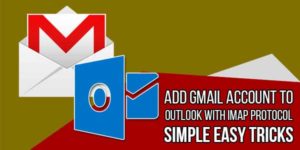
Have you ever received an email from a brand that felt like they’ve read your mind? That was probably email automation working its magic. Automated emails are the closest thing to reading your recipients’ minds and anticipating what they need. How? Using email automation tools to deliver timely and personalized messages that resonate with them.
Email automation is a strategic approach that helps you revolutionize your email campaigns. No wonder why so many businesses harness its power to contact their subscribers and get ahead of their competitors:
To follow their lead, read on to discover how email automation tools help you nurture leads, drive conversions, and build trusting relationships with your readers—all while saving time and effort. But first, let’s discuss how you’ll select the ideal tool for your business.
Table of Contents
How To Choose The Right Email Automation Tool?
Choosing the perfect email automation tool is a critical factor in maximizing the effectiveness of your email marketing efforts. So, how can you identify the one that aligns with your goals?
Mailchimp, Moosend, and Constant Contact are considered top options for automating your email marketing. But to figure out which tool is the perfect fit for you, you need to:
Set your requirements: Before making a choice, define what features are most important to you. Do you need advanced segmentation capabilities, seamless integration with third-party platforms, or robust analytics? It’s also critical to consider your marketing budget and the complexity of your campaigns. Some businesses could benefit from user-friendly solutions while others require more sophisticated tools with complex workflows.
Evaluate features and integrations: Depending on your specific needs and limitations, you should look for email automation solutions that go beyond basic email capabilities. For example, you might want to prioritize tools offering personalization options, pre-made and responsive email templates, or A/B testing. You should also check whether the tool selected integrates with other software you already use, such as CRMs or eCommerce platforms. This type of integration ensures smooth data management, giving you a unified view of customer interactions.
Prioritize scalability and support: As your list and business grows, so will your email marketing automation needs. That’s why you must pick a tool that can scale with your company without missing features and ease of use. Or paying a fortune. Additionally, excellent customer support should be a top priority. You’ll need responsive and quick customer service that helps you resolve potential issues and optimize your email automation strategies effectively.
Your final choice depends on your business goals: If you own a large corporation with complex needs, it’s wise to pick a tool with a variety of advanced automation options. For instance, Mailchimp’s Customer Journey feature allows you to build as simple or complicated workflows as you need. You can visually map automated customer paths using different starting points, rules, and actions, improving the likelihood of conversions at every stage of their journey.
4 Email Automation Workflows To Engage Subscribers:
Once you’ve got your tool of choice all figured out, it’s time to test what email automation can do for your business objectives. By using the following email automation workflows, you’ll be on your way to boosting recipient engagement—and your email ROI.
Behavioural Emails:
Behavioural emails are triggered by users’ interactions with your brand. You can automate such emails when customers take specific actions, like abandoning a cart, downloading a piece of content, or making a purchase. Transforming behavioural data into targeted automated emails allows marketers to keep customers engaged and increase sales. Here are the main types of data that could set a behavioural email in motion: First, you’ll have to define the behaviours that should serve as the trigger for dispatching such an email. Based on these behaviours, segment your audience to ensure more personalized email content. Then, you can craft relevant messages that align with each trigger, providing recipients with tailored information, recommendations, or promotions.
First, you’ll have to define the behaviours that should serve as the trigger for dispatching such an email. Based on these behaviours, segment your audience to ensure more personalized email content. Then, you can craft relevant messages that align with each trigger, providing recipients with tailored information, recommendations, or promotions.
For instance, if a user signs up for an upcoming webinar, you can automate an email to be dispatched right after their registration. Use the email to confirm their registration details and share a sneak peek of what they can expect from the webinar. You could even include links to relevant content like blog posts. Not only will you warm them up, but you’ll also drive traffic to your website.
Lead Nurturing Emails:
When a recipient subscribes to your email list, your first concern should be to get them to trust your products or services. This is where lead nurturing emails come into play. Email automation helps you nurture leads at every stage of the sales funnel towards making a purchase decision.
With lead nurturing emails, the goal is to stay on top of mind and build meaningful customer relationships. And the first step to achieve it is to deliver email content that addresses their pain points. Email automation tools allow you to do just that—schedule email content based on lead behaviour and engagement metrics to personalize their experience. And they do so while saving you time from following up with leads manually.
For example, welcome emails are an excellent way to introduce your brand to new subscribers. When people subscribe to your service, you can set an automation to trigger a user onboarding email series within a specific timeframe. Just like the following:
This is your chance to share your vision and brand story and set expectations on what they should expect from future communications. Promise them valuable content like the latest blog posts, industry insights, or exclusive discounts and promotions to show them they’ve made the best choice.
Win-Back Emails:
Losing some of your customers along the way is something you should expect. One day they’re visiting your website and buying your products and the next day they could opt for another brand. No need to stress about it, though. Just because they haven’t interacted with your business for a while, it doesn’t mean they’re gone for good.
Automated win-back emails are all you need to re-engage dormant recipients and remind them why they trust your offerings. Targeting inactive customers after a time interval has elapsed is one of the most effective use cases of email automation. To inspire them to come back, you should personalize this type of email using past interactions like their browsing and purchase history. The fact that they’ve already engaged with your business gives you valuable data to create relevant and compelling emails.
Let’s imagine you have a customer who made a purchase three months ago and then became inactive. Consider triggering an automated win-back email offering a special discount or incentive to urge them to come back to your eCommerce store and shop. That way, you save time from manually checking which customers have become dormant. All you need to do is set a rule once and trigger automated campaigns to disengage customers to bring them back.
Feedback Emails:
There’s no better proof that you appreciate your customers and value their opinions than asking for their feedback. It shows them that you put their satisfaction above everything else and care to further improve their experience. And that’s the reason feedback emails can turn one-time shoppers into loyal customers.
Automated feedback emails are usually triggered after a customer has purchased your product or service. As you can tell, timing is of the essence with this kind of email campaign. So, design an automated workflow that will be triggered shortly after the purchase. Be careful, though, as you shouldn’t deliver such an email before your customer has received the product.
Feedback emails go beyond helping you improve your offerings. When customers provide feedback through automated surveys and feedback emails, brands can use them as authentic social proof to build credibility with potential customers. Positive customer reviews and testimonials serve as powerful tools to elevate future marketing campaigns. From adding them to your website to leveraging them on social media, use their feedback as you see fit to enhance your brand reputation.
Food52.com does an excellent job with their feedback email. Starting from the subject line, the reader understands beforehand how sharing their feedback will also benefit them rather than just the brand. The email copy is simple and gets straight to the point. Promising subscribers it will be a quick process is a clever touch showing that the brand values their time.
Email Automation Tools Help You Grow Your Business:
Email automation tools do much more than saving time and helping you send mass emails. They ensure marketers send the right message at the right time, which, in turn, is key to acquiring and retaining customers. Personalized and timely emails make customers feel special and motivated to interact with your business.
Make sure you research the market and follow our tips to find the winning email marketing automation solution. Use their free versions or free trials to discover their potential and whether they could serve your needs. Last but not least, once you set your automated emails in motion, keep trying new tactics and testing to stay relevant—and ahead of the competition.

 About the Author:
About the Author:
















Nice post. Thanks for sharing.
Welcome here and thanks for reading our article and sharing your view. This will be very helpful to us to let us motivate to provide you with more awesome and valuable content from a different mind. Thanks again.
Welcome here and thanks for reading our article and sharing your view. This will be very helpful to us to let us motivate to provide you with more awesome and valuable content from a different mind. Thanks again.
Fabulous insights into email automation for efficient campaigns! These tools make campaign management easier, ensuring messages reach the right people at the right time!
Welcome here and thanks for reading our article and sharing your view. This will be very helpful to us to let us motivate to provide you with more awesome and valuable content from a different mind. Thanks again.